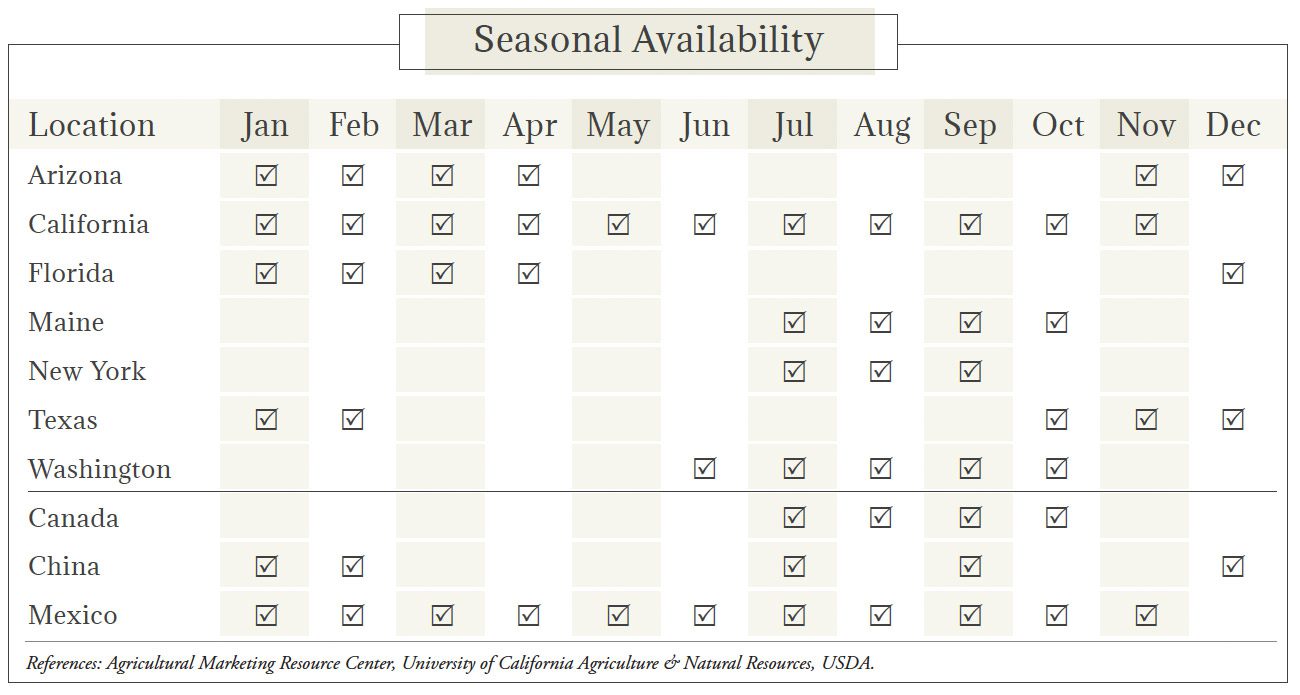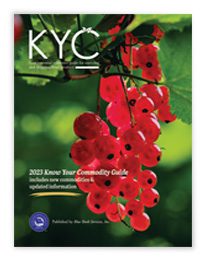Cauliflower Market Summary


Image: Lisa Mar/Shutterstock.com
Cauliflower Market Overview
Cauliflower, Brassica oleracea, is an edible flower originating in Asia. It belongs to the same family as cabbage, along with bok choy, broccoli, Brussels sprouts, collard greens, kohlrabi, and kale—collectively referred to as cole crops. A cool season vegetable, cauliflower is available in varying head or curd sizes, as well as colors including yellow, purple, green, and orange. Romanesco is an Italian broccoli-cauliflower hybrid with pointy florets and more pronounced flavor.Types & Varieties of Cauliflower
Unlike several of its siblings in the cabbage family, cauliflower is more sensitive to the cold and not as easy to grow. There are dozens of varieties in North America, producing white or colored curds including Andes, Aquarius, Candid Charm, Cheddar, Cristof, Flame Stare, Graffiti, Green Goddess, Orange, Self-Blanche, Snow Crown, Snowball Y Improved, Synergy, Tamarack, Violet Queen, and White Corona. Cauliflower grown in the United States is destined primarily for the fresh market. Newer products with finely chopped and crumbled cauliflower are marketed as a carb substitute and gluten-free alternative for flour. The trademarked Caulilini, often called baby cauliflower, has tender green stems and pale heads.The Cultivation of Cauliflower
Most U.S. cauliflower is grown in California greenhouses then transplanted planted in the spring or fall. Plants thrive in mild, sunny temperatures, though extremes in temperature or wind can cause damage. Once transplanted, cauliflower should grow without interruption to ensure a properly developed tight head. As heads develop, tying leaves over the curd will avoid sunburn and maintain blanching (preventing the development of chlorophyll); heads are typically ready to harvest 1 or 2 weeks later. Newer varieties are self-blanching. Once mature, about 6 to 8 inches in diameter, the main stem is cut by hand. Over-ripening causes a rice-like appearance with loose and protruding floral parts.
Pests & Diseases Affecting Cauliflower
Nematodes or roundworms are a frequent nuisance for cole crops. Other pests include aphids, bagrada bugs, beetles, cabbage loppers, cabbage maggots, leafminers, leafrollers, moths, whiteflies, and various types of worms. Black rot is exacerbated by warm temperatures and excess moisture, appearing as black flecks, scorched leaf margins, or a blackened curd. Sooty mold and curd smudge present in a similar manner but can be eliminated with washing. Other diseases include blight, clubroot, fusarium, leaf spot, downy mildew, molds, root rot, verticillium wilt, wirestem, and white rust.Storage & Packaging of Cauliflower
Cauliflower is typically wrapped in plastic and transported at 32 to 34°F with relative humidity of 95% or more, occasionally with top ice though excess moisture can cause mold. If temperature is not managed, freezing injury can cause wilting, translucency, or a dry, mealy curd. Cauliflower is sensitive to ethylene; exposure can cause yellowing of the curd and leaves detaching from the head. References: Pacific Northwest Pest Management, University of California Vegetable Research & Information Center, University of Illinois Extension, University of Massachusetts, Amherst, USDA.Grades & Good Arrival of Cauliflower
Cauliflower is divided into U.S. No. 1 and U.S. Commercial grades. High-quality cauliflower will be clean, well-trimmed, and free from injury.Generally speaking, the percentage of defects shown on a timely government inspection certificate should not exceed the percentage of allowable defects, provided: (1) transportation conditions were normal; (2) the USDA or CFIA inspection was timely; and (3) the entire lot was inspected.
| U.S. Grade Standards | Days Since Shipment | % of Defects Allowed | Optimum Transit Temp. (F) |
| 10-5-1 | 5 4 3 2 1 | 15-8-3 14-8-3 13-7-2 11-6-1 10-5-1 | 32° |



